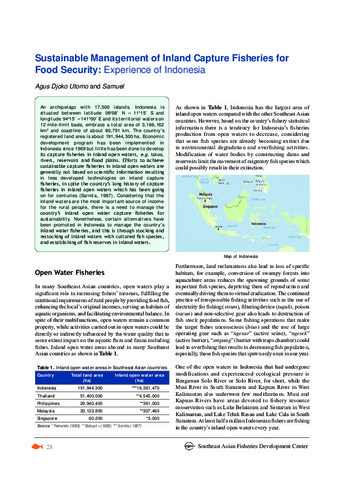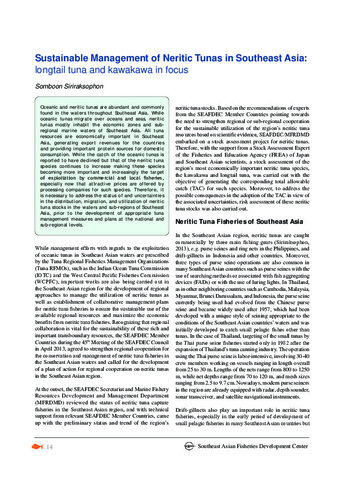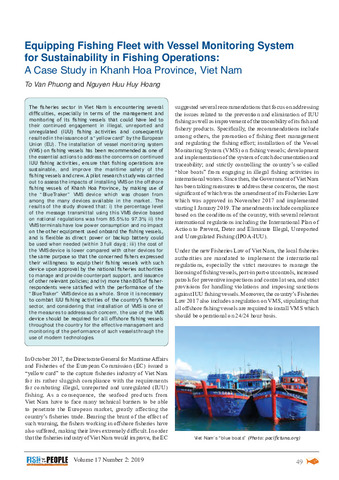Sustainable management of inland capture fisheries for food security: Experience of Indonesia

ရှာဖွေ/ဖွင့်ပါ။
Downloads: 1,188
ရက်စွဲ
2017Page views
583
Share
စိတ္တဇ
An archipelago with 17,500 islands, Indonesia is situated between latitude 06° 08’ N – 11° 15’ S and longitude 94° 15’ – 141° 00’ E and its territorial waters on 12 mile-limit basis, embrace a total area of 3,166,162 km 2 and coastline of about 80,791 km. The country’s registered land area is about 191,944,300 ha. Economic development program has been implemented in Indonesia since 1969 but little has been done to develop its capture fisheries in inland open waters, e.g. lakes, rivers, reservoirs and flood plains. Efforts to achieve sustainable capture fisheries in inland open waters are generally not based on scientific information resulting in less developed technologies on inland capture fisheries, in spite the country’s long history of capture fisheries in inland open waters which has been going on for centuries (Sarnita, 1987). Considering that the inland waters are the most important source of income for the rural people, there is a need to manage the country’s inland open water capture fisheries for sustainability. Nonetheless, certain alternatives have been promoted in Indonesia to manage the country’s inland water fisheries, and this is through stocking and restocking of inland waters with cultured fish species, and establishing of fish reserves in inland waters.
Suggested Citation
Utomo, A. D., & Samuel (2017). Sustainable management of inland capture fisheries for food security: Experience of Indonesia. Fish for the People , 15(2), 28-35. http://hdl.handle.net/20.500.12066/1195
ဘာသာရပ်
စုစည်းမှုများ စုစည်းမှုများ
Related items
Showing items related by title, author, creator and subject.
-
Potentials and prospects of Southeast Asian eel resources for sustainable fisheries and aquaculture development
Siriraksophon, Somboon; Ayson, Felix G.; Sulit, Virgilia T. (Secretariat, Southeast Asian Fisheries Development Center, 2014)The world demand for river eels has been increasing mainly because of the market expansion of some delicacies such as the kabayaki (broiled eel with sweet soy sauce) in East Asia. While most of the world’s eel production ... -
Sustainable management of neritic tunas in Southeast Asia: Longtail tuna and kawakawa in focus
Siriraksophon, Somboon (Secretariat, Southeast Asian Fisheries Development Center, 2017)Oceanic and neritic tunas are abundant and commonly found in the waters throughout Southeast Asia. While oceanic tunas migrate over oceans and seas, neritic tunas mostly inhabit the economic zones and subregional marine ... -
Equipping fishing fleet with vessel monitoring system for sustainability in fishing operations: A case study in Khanh Hoa Province, Viet Nam
Phuong, Van; Nguyen, Huu Huy Hoang (Secretariat, Southeast Asian Fisheries Development Center, 2019)The fisheries sector in Viet Nam is encountering several difficulties, especially in terms of the management and monitoring of its fishing vessels that could have led to their continued engagement in illegal, unreported ...




